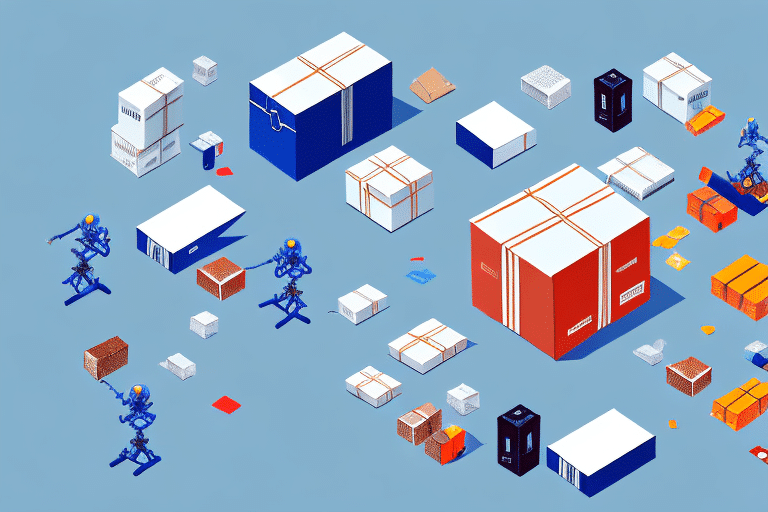Understanding the Role and Benefits of 3PLs in Business Operations
For businesses in their growth stage, operational efficiency is critical to their success. One effective strategy is leveraging third-party logistics providers (3PLs). 3PLs help streamline supply chains and reduce costs, allowing businesses to focus on their core competencies. By outsourcing logistics functions such as transportation, warehousing, and inventory management to a 3PL, companies can minimize overhead costs and mitigate risks associated with supply chain operations.
Additionally, 3PLs bring specialized expertise in logistics, providing valuable insights into supply chain optimization and regulatory compliance. Their ability to scale operations swiftly in response to fluctuating demand ensures that businesses can maintain a competitive edge without the constraints of managing logistics internally.
According to a report by Supply Chain Digital, businesses that partner with 3PLs experience an average of 15% reduction in logistics costs and a 20% improvement in supply chain efficiency.
Choosing the Right 3PL Provider for Your Business Needs
Selecting the appropriate 3PL provider is crucial for aligning with your business goals and operational requirements. Key factors to consider include:
- Industry Expertise: Ensure the 3PL has experience in your specific industry to understand unique challenges and requirements.
- Operational Capabilities: Assess the range of services offered, such as transportation, warehousing, and technology integration.
- Technology Offerings: Look for advanced systems like Transportation Management Systems (TMS) and Warehouse Management Systems (WMS) that enhance visibility and efficiency.
- Geographical Reach: Consider the provider’s network to ensure they can support your expansion plans and reach target markets effectively.
- Reliability and Scalability: The provider should demonstrate consistent performance and the ability to scale operations as your business grows.
- Cost vs. Value: Evaluate pricing structures in relation to the quality and range of services provided.
Additionally, prioritize 3PLs that offer excellent customer service, including dedicated account management and responsive communication channels. Reviewing their track record for customer satisfaction and their ability to provide tailored solutions can further ensure a successful partnership.
For more insights on selecting a 3PL, refer to resources from the Council of Supply Chain Management Professionals (CSCMP).
Customizing 3PL Services to Streamline Operations and Boost Productivity
Once a 3PL provider is selected, collaboration is essential to tailor their services to your specific business needs. This customization can lead to significant cost savings and productivity enhancements. Key strategies include:
Implementing Vendor-Managed Inventory (VMI)
VMI systems allow the 3PL to manage inventory levels and replenishment, reducing stockouts and overstocking. This leads to improved order fulfillment rates and enhanced customer satisfaction.
Establishing Reverse Logistics Programs
Managing product returns efficiently through reverse logistics can minimize waste and improve sustainability. It also enhances customer experience by providing a hassle-free returns process.
Integrating Advanced Technology
Adopting technologies such as automation, Internet of Things (IoT), and artificial intelligence (AI) can drive operational efficiencies. Collaborate with your 3PL to implement these technologies for better tracking, reporting, and analytics.
Effective customization relies on transparent communication. Regularly discuss goals, challenges, and expectations to ensure alignment and continuous improvement.
Implementing Best Practices in Collaboration with 3PL Providers
Successful collaboration with a 3PL provider is fundamental to achieving operational excellence. Best practices include:
- Clear Communication: Establish regular communication channels and define roles and responsibilities to ensure all parties are aligned.
- Data Sharing: Share relevant data such as inventory levels, order volumes, and customer feedback to enable informed decision-making.
- Joint Performance Monitoring: Utilize key performance indicators (KPIs) to track progress and identify areas for improvement collaboratively.
- Continuous Training: Invest in training programs to ensure that both your team and the 3PL staff are knowledgeable about processes and expectations.
Building a strong, trust-based relationship with your 3PL fosters transparency and mutual respect, which are essential for long-term success.
For further guidance, consult the guidelines provided by the Association for Supply Chain Management (ASCM).
Overcoming Common Challenges in Managing 3PL Relationships
Despite the benefits, managing relationships with 3PL providers can present challenges such as inconsistent communication, missed targets, and disagreements over pricing or service quality. To address these issues:
- Establish Clear Service Level Agreements (SLAs): Define expectations, performance metrics, and terms of engagement to provide a clear framework for the partnership.
- Regular Performance Evaluations: Continuously monitor the 3PL’s performance against SLAs and provide timely feedback to address any shortcomings.
- Collaborative Problem-Solving: Foster a partnership mentality where both parties work together to resolve issues transparently and constructively.
- Implement Advanced Tracking Systems: Utilize Transportation Management Systems (TMS) for real-time visibility and control over the supply chain, reducing delays and errors.
Addressing these challenges proactively ensures a harmonious and productive relationship with your 3PL provider.
Additional strategies can be found through the Supply Chain Digest.
Measuring the Impact of 3PLs on Business Performance and Profitability
Assessing the effectiveness of outsourcing to 3PLs is vital for ensuring sustained success. Key performance indicators (KPIs) to monitor include:
- Inventory Accuracy: Improved inventory management by 3PLs leads to reduced stockouts and overstocking, enhancing order fulfillment rates.
- Order Accuracy and Fulfillment Speed: Track the precision and timeliness of order deliveries to gauge customer satisfaction levels.
- Cost Savings: Analyze reductions in logistics and operational costs achieved through 3PL partnerships.
- Customer Satisfaction: Measure customer feedback and repeat business as indicators of service quality and reliability.
Regularly reviewing these KPIs allows businesses to make data-driven decisions, optimizing their partnership with 3PLs to better align with evolving business needs and market demands.
For more information on supply chain metrics, visit the Supply Chain Management Review.
Exploring Innovative Technologies for Enhanced Supply Chain Efficiency with 3PLs
Staying ahead with technological advancements is crucial for optimizing supply chain management. Innovations such as automation, Internet of Things (IoT), and artificial intelligence (AI) offer significant improvements in efficiency and cost savings. Collaborate with your 3PL to adopt these technologies, which can enhance tracking, forecasting, and overall operational performance.
Blockchain for Supply Chain Transparency
Blockchain technology provides a secure and transparent method for tracking products and transactions throughout the supply chain. This reduces fraud, increases efficiency, and improves traceability. Many leading 3PLs are integrating blockchain to enhance supply chain security and reliability.
Sustainability Initiatives
Incorporating sustainable practices is increasingly important as consumers demand environmentally responsible products. Work with your 3PL to identify opportunities for waste reduction, energy efficiency, and carbon footprint minimization. Sustainable supply chain practices not only benefit the environment but also enhance your brand’s reputation and customer loyalty.
For insights on emerging supply chain technologies, refer to the Inbound Logistics.
Scaling Your Business with Confidence through Successful Integration with 3PLs
Partnering with a 3PL offers numerous advantages for scaling businesses, including access to extensive resources and infrastructure without significant capital investment. 3PLs provide warehouses, transportation networks, and advanced technology systems that support business expansion and market reach.
- Access to a Broad Network: Utilize the 3PL’s established network to enter new markets and enhance distribution capabilities.
- Flexibility and Adaptability: 3PLs can adjust logistics services to accommodate changing business needs, such as seasonal demand fluctuations or new product lines.
- Cost Efficiency: Avoid the high costs associated with building and maintaining logistics infrastructure by leveraging the 3PL’s existing resources.
By successfully integrating with 3PLs, businesses can confidently scale operations, ensure consistent service quality, and achieve long-term profitability.
Learn more about scaling with 3PLs from the American Express Business Trends.




















